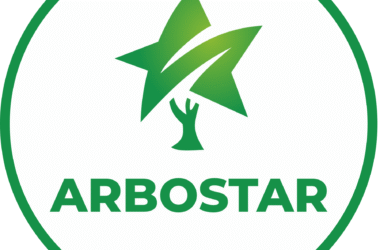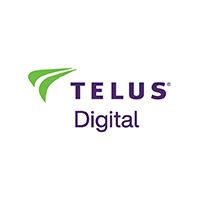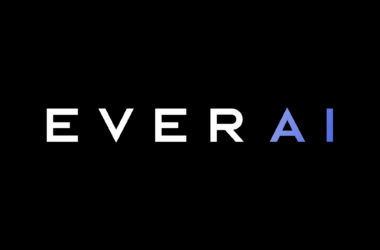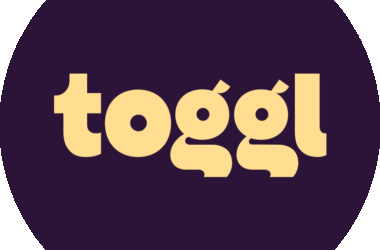Employee goal setting is important for reaching broader enterprise targets, nevertheless a wide range of us wrestle to know the place to start.
American psychologist Edwin A. Locke first developed the “goal setting” concept as the tactic of defining key goals and measurable outcomes that immediately (or indirectly) contribute to reaching the final enterprise targets.
In his evaluation, he explored the hyperlink between targets and job effectivity and positioned that motivation is important for driving teams to make vital progress in the direction of their targets.
Nonetheless not happy? Listed below are some key methods during which goal setting helps every firms and their staff.
Targets for organizations:
- Maintain staff and managers focused on shared enterprise targets to chop again wasted efforts and enhance have an effect on
- Encourage staff to work collectively to strengthen group bonds
- Make it less complicated to hint progress, contemplate outcomes, and refine strategies
Targets for staff:
- Enhance understanding of how their work contributes to broader organizational success.
- Create a shared sense in fact and motivation amongst group members.
- Help contribute in path of career progress and enchancment options
Enhance your group’s effectivity with Hubstaff’s productiveness devices
Why is employee goal setting crucial?
Employee goal setting is a very powerful indicator of success for any group. In step with Locke and Latham’s Objective Setting concept, 80% of Individuals perform better with specific, challenging goals than these with imprecise or no targets.
Clearly outlined targets may additionally assist receive goals sooner, drive group success, and improve employee effectivity and morale.
Nonetheless you may be contemplating, what’s the excellence between agency and explicit individual targets?
There’s a fragile distinction, nevertheless one’s career targets can sometimes align with reaching worthwhile organizational milestones.
Specific individual targets would possibly embrace:
- Career enchancment certifications and finding out new experience
- Non-public productiveness milestones
- Enhancing work-life stability and reducing burnout
Organizational targets would possibly embrace:
- Strengthen interior administration and hire prime expertise
- Enhance employee satisfaction and retention
- Improve interior departmental collaboration
- Hit a model new report throughout the problem provide timeline
Objective setting works most interesting when employee targets align with overarching agency goals. When staff understand how they actively contribute to the company’s success, they’re more likely to be motivated and productive.
Listed below are just some employee goal-setting examples and the fitting method to align personal targets with organizational outcomes:
| Organizational Objective | Aligned Specific individual Objective | Learn the way to Align | Revenue |
| Enhance product adoption by 20% | Examine superior product choices to assist clients larger | Current teaching, set personal KPIs spherical product expertise | Improves purchaser assist and adoption |
| Develop right into a model new market | Assemble experience in cross-cultural communication | Assign regional duties, provide language or market-specific teaching | Strengthens world group readiness |
| Improve group collaboration and effectivity | Improve communication and problem administration experience | Set OKRs related to collaboration; use devices like Slack, Asana | Boosts productiveness and cross-team synergy |
What are the challenges when targets are imprecise or out of alignment?
- Productiveness drop-offs attributable to unclear goals or siloed teams
- Decreased employee morale attributable to unrealistic and unmet expectations
- Misalignment attributable to poorly constructed solutions loops or an entire lack of solutions
The absence of normal productiveness monitoring can distract teams from reaching essential targets. You may need to monitor employee effectivity for the matter metrics to know what strikes the needle.
What are the sorts of employee targets?
Employee targets can be found in many varieties, and each serves a novel objective. Lastly, these targets ought to help be a part of the dots for broader, company-wide targets.
Effectivity targets
Employee effectivity targets are linked to enhancing explicit job duties or measurable outcomes (e.g., rising product sales by 10% or bettering purchaser satisfaction scores).
Locke and Latham’s Objective-Setting Precept emphasizes that SMART targets sometimes drive elevated outcomes.
Teamwork targets
Teamwork targets are community-driven and strengthen collaboration and communication (e.g., constructively contributing to cross-functional duties and resolving group conflicts).
Harvard Business Review notes that nurturing a means of belonging by the use of teamwork can improve effectivity, significantly in distant group environments.
Innovation targets
Innovation targets would possibly embrace ingenious contemplating, problem-solving, and revolutionary ideas or processes (e.g., proposing one new operate or course of enchancment per quarter).
McKinsey reports that corporations that foster innovation outperform rivals in progress and profitability.
Productiveness targets
Employee productiveness targets embrace larger time administration, helpful useful resource allocation, and output enchancment (e.g., reducing job turnaround time by 15% and automating repetitive workflows).
In step with the Hubstaff AI Productiveness Shift Report, teams using AI report 77% sooner job completion and a 45% improve in productiveness.
Expert enchancment targets
Expert enchancment targets help staff assemble momentum spherical personal progress and talent establishing and assist their long-term career improvement (e.g., ending a certification or attending a administration course).
LinkedIn’s Workplace Finding out Report reveals 94% of employees would hold longer at a company that invests in career enchancment.
Objective setting frameworks to satisfy the company goals
Having a goal-setting framework isn’t merely helpful; it’s essential.
With out development, you wouldn’t know if it’s time to hit the health middle or sit down for dinner. The an identical principle applies in organizational goals in your enterprise: clear, strategic targets maintain your teams focused, enhance job satisfaction, and enhance employee morale and productiveness.
Implementing goal-setting software program program is beneficial, nevertheless you’ll nonetheless need to confirm a goal-setting framework to realize success. Nonetheless with so many frameworks in the marketplace, choosing the right one to your agency shall be overwhelming.
That may provide help to get started, listed under are the essential factor sorts of employee targets it is good to understand:
OKRs
Targets and Key Outcomes (OKR) refers to goals and key outcomes, a strategic method organizations use to set formidable, tough targets with measurable outcomes. OKRs are an efficient method to work together teams working in path of a typical goal and measure outcomes.
This system may also help employee effectivity evaluations and take employee productiveness measurement to a model new strategic diploma.
As an illustration, our promoting group at Hubstaff makes use of OKRs to align employee and group targets with broader organizational effectivity. They provide measurable, actionable targets that drive each day productiveness and long-term success.
Sample OKR Desk:
SMART Targets
SMART targets are Specific, Measurable, Attainable, Sensible, and Time-bound. They’re going to moreover help teams grasp time administration experience and prioritize duties.
- Specific: Define who’s involved, what have to be achieved, and why the aim points
- Measurable: Clearly see how teams monitor progress, attain outcomes, and uncover success
- Achievable: Targets must be smart and attainable expectations
- Associated: Should align with broader and vital enterprise goals
- Time-bound: Have a clear deadline or timeframe to create urgency and accountability
As an illustration, a SMART Objective would possibly enhance YouTube subscribers from 6k to 8k inside the following quarter, give consideration to product feature-based tutorials, and replicate the flicks with basically essentially the most views.
Huge Bushy Audacious Targets (BHAGs)
BHAGs (Huge Bushy Audacious Targets) are daring, long-term goals deliberate by the group to encourage and align everyone in the direction of a shared imaginative and prescient. These targets are designed to push boundaries, give consideration to the bigger picture, and encourage staff to contribute to a typical, formidable mission.
For instance, planning for a company-wide teaching program on understanding async work may additionally assist kind the broader goals of a distant group.
Whoop Targets
Need Consequence Obstacle Plan (Whoop) targets are tied to explicit elements of an complete goal associated to cognitive alerts. It helps create a motivated workforce.
- Need – A major want to achieve one factor personally essential
- Consequence – The very best emotional satisfaction stems from fulfilling a need
- Obstacle – An interior thought or habits that will stop any individual from reaching a goal
- Plan – A way to beat interior blockages after they arrive
WOOP is bigger than goal-setting — it’s a science-backed psychological method confirmed to boost self-regulation, explicit individual effectivity, and follow-through by integrating psychological contrasting with implementation intentions.
Objective Pyramid
A pyramid bridges the outlet between a long-term and a short-term goal, connecting them and breaking duties into smaller, further manageable steps. It helps individuals and organizations meet bigger targets further successfully with readability and easily measurable progress.
Let’s say the product sales group wants to increase annual earnings by 30%, and to achieve this goal they goal to:
- Develop purchaser base by 20%
- Enhance widespread deal measurement by 15%
Key actions embrace:
- Making 40+ outbound contacts weekly
- Scheduling 5 demos per rep
- Holding weekly product sales teaching and evaluations
CLEAR Targets
Clear targets sound exactly similar to the determine — well-defined goals designed with explicit, measurable outcomes in ideas. Setting clear targets ensures group alignment, drives accountability, and helps strategic progress.
CLEAR stands for:
- Collaborative: Created with inputs from interior teams
- Restricted: Concentrating on explicit outcomes over imprecise aspirations
- Emotional: Connects to a objective to drive motivation
- Appreciable: Actionable steps which may be tracked and celebrated
- Refinable: Refining targets as circumstances change with out rigidity
As an illustration, a company aiming to boost purchaser satisfaction might set a clear goal like: “By This autumn, enhance Net Promoter Score (NPS) by 15% by lowering down purchaser assist response cases by the use of the implementation of AI chatbots.
The step-by-step course of for setting smart group targets
Employee goal-setting shall be environment friendly for any group, whether or not or not a start-up defining enterprise targets or a giant enterprise. Nonetheless, by following a step-by-step technique, corporations may additionally assist teams and staff attain their very personal effectivity targets.
Listed below are the goal-setting steps that’ll mean you can get started:
- 1. Align with agency goals. First, be sure that individual individual targets assist your complete enterprise course. This clear connection helps staff see the broader imaginative and prescient and understand how their work contributes to the company’s success.
- 2. Include staff throughout the course of. Collaboration leads to connection and a means of group. Staff’ enter into their targets improves the goal-setting course of and makes them further extra prone to take possession and accountability for acknowledged targets.
- 3. Make targets actionable and trackable. Define each goal using clear, measurable requirements. A development will make progress less complicated to hint and take away confusion about what success appears to be like.
- 4. Set timelines and milestones. Break down targets into smaller steps with deadlines. Milestones help protect momentum and supplies options to rejoice progress.
- 5. Overview progress incessantly. Frequent check-ins help deal with roadblocks early and assure alignment. These widespread effectivity evaluations create a solutions loop that fosters regular enchancment.
Most interesting practices and tips to create well-defined employee targets
When achieved correct, goal setting can carry the best out of a problem. Nonetheless you need the becoming devices and method to reach the desired finish end result. These employee goal-setting most interesting practices and solutions will set your teams up for achievement.
Maintain communication open
In the event you nurture transparency and open communication with teams, they work larger. Productiveness monitoring supplies managers clear visibility into how teams spend time and presents context for vital check-ins. You probably can merely spot the place group members might need assist and deal with roadblocks early, rising perception and accountability.
Use know-how to streamline the tactic
Employee time monitoring software program program like Hubstaff isn’t solely a time-tracking instrument; it’s a full productiveness platform — significantly when you pair the Insights add-on.
Managers can use Hubstaff to create duties, monitor time to them, and visualize progress with customizable, real-time dashboards. You can also pull detailed experiences. This makes it easy to stay on prime of milestones with out micromanaging.
Have enjoyable achievements
Merely differentiate between productiveness and effectivity and rejoice extreme performers. With Hubstaff’s 20+ detailed experiences, you probably can shortly spot achieved duties, key problem milestones, and well-managed time.
Achievement badges mean you can decide and rejoice staff for train scorching streaks, job completions, and hours labored.
Be versatile when needed
Enterprise targets shift, and so do duties and priorities. This requires a powerful problem administration instrument to take care of up. The Duties add-on is right for:
- Monitoring time to duties and duties. Observe time spent on duties and duties to see hours labored, problem spend, and further real-time particulars for larger budgeting.
- Visualizing workflows. Seamlessly shift between Sprint, Timeline, or Kanban views to visualise in methods during which make you further productive.
- Setting employee targets. Use the automated Stand-up operate to confirm in with staff asynchronously. Set targets, gauge employee morale, and deal with blockers with completely customizable questions.
With all of the items centralized, adapting to fluctuate turns into simple, and your workflow stays clear and versatile.
Stay away from unrealistic targets
Data is your most interesting safety in the direction of setting the bar too extreme. Hubstaff presents granular effectivity information to set targets based totally on exact functionality, not guesswork.
By detailed experiences, uncover employee productiveness metrics and Key Effectivity Indicators (KPIs) that will help, along with:
- Course of completion price
- Workforce utilization
- Focused work courses
- Outcomes-driven work
Finding out from the knowledge, you probably can set attainable targets and get larger outcomes.
FAQs
1. What are some great benefits of employee goal setting?
Objective setting supplies staff development, course, and objective in each day duties. It motivates teams by connecting their efforts to vital outcomes and drives elevated effectivity.
Benefits embrace:
- Elevated motivation and engagement
- Higher accountability and readability
- Improved effectivity administration (with devices like Hubstaff)
- Increased alignment with group and agency priorities
- Help for career enchancment
2. How sometimes should targets be reviewed?
Targets must be reviewed month-to-month or quarterly, counting on their scope and complexity. Frequent evaluations maintain everyone aligned and Agile adequate to adapt to changes.
With Hubstaff, you probably can:
- Monitor progress in real-time by the use of dashboards
- Use experiences to assist widespread analysis conferences
- Quickly decide bottlenecks or success areas
3. What’s the excellence between OKRs and SMART targets?
OKRs (Targets and Key Outcomes) are formidable, measurable targets that drive group alignment. SMART targets are smart and actionable, specializing in finishing up explicit outcomes inside a defined timeframe.
Key distinctions:
- OKRs push for progress and innovation
- SMART targets data short-term execution
- Use Hubstaff to hint every problem boards and time experiences
4. How do you align explicit individual targets with agency goals?
The first step in connecting explicit individual targets to agency goals is breaking down company-wide OKRs into division—and individual-level targets. Assure staff understand how their duties contribute to reaching a broader finish end result. For instance, there was a 30% earnings enhance from ultimate quarter.
Ideas for alignment:
- Use Hubstaff Duties to map goal hierarchies
- Current have an effect on with time monitoring and problem information
- Reinforce connections in widespread 1:1s and group conferences
- Promote possession with clear progress monitoring
Source link





